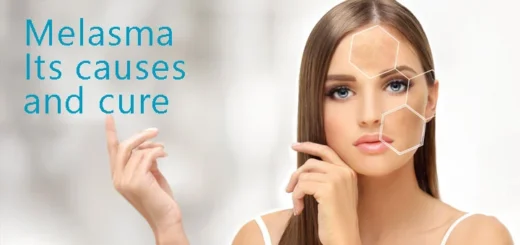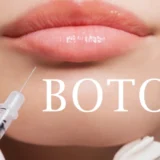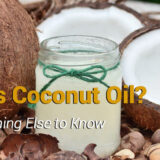Healthy Skin and Scalp: Key Tips for YOU

Key Tips for Healthy Skin and Scalp will guide you through essential practices to enhance your skin and scalp health, ensuring a radiant and balanced look. This FAQ Handbook will Demystify answers to your most pressing questions.
Healthy skin and a well-fed scalp are the essence of beauty. However, achieving this balance can be tricky, especially regarding hygiene, skin type, and care routines. With numerous myths associated with healthy skin and scalp care, one needs to understand what the science behind it is and how our body functions as well as what it truly needs.
This article emphasizes the importance of healthy skin and scalp care and hygiene for overall health by preventing hair fall, dryness in the head (dandruff), or even acne on the face. It explains the different scalp types that need a specific care routine, which is why sunscreen with adequate SPF, TPA, and IR protection is fundamental to protecting your skin. Additionally, this write-up addresses differences between Botox and fillers, and other misconceptions about skincare like washing too much causes more acne. It points out the great importance of nutrition for healthy skin hair and nails; as well as emphasizes hydrating, correct facial cleansing, teenage skincare, and avoiding excessive use of active ingredients.
Let’s explore the best practices for healthy skin and scalp to help you maintain a radiant appearance.
1. Scalp Hygiene: A Key to Healthy Hair
When it comes to hair health, one common myth is that frequent washing can lead to hair loss. This is entirely false. Washing should be done adequately because the cleaning of your hair helps maintain scalp hygiene, i.e., good health for new growth. The dust, dandruff, and sebum accumulate on your scalp; and can cause inflammation leading to hair fall. Here’s how to plan a Scalp care routine that works best according to your scalp type.
Dry Scalp: If your scalp is flaky, itchy, or sensitive after washing and appears red, you may have a dry scalp. To treat this, avoid washing your hair every day. Wash every other day to allow natural oils to hydrate and protect your scalp.
Oily Scalp: If your scalp is oily, wash your hair daily. Excess oil feeds yeast, leading to dandruff. Daily washing helps control both.
Oily Scalp with Dry Hair: Wash your scalp daily, but avoid over-washing. Shampoo your hair once a week to provide hydration and shine. Use conditioner after each wash to keep your hair moisturized.
2. Skin Hygiene for Healthy Skin: Customizing Your Routine to Fit Your Skin Type
Your skincare routine should consider your skin’s needs. Here’s how to maintain good hygiene.
Soap Choice: Liquid soap is more hygienic because it’s stored in a dispenser, minimizing contamination. Solid soap can accumulate bacteria due to repeated handling and moisture retention.
Bathing Frequency: Ideally, bathe twice daily, but excessive washing can remove your skin’s natural oils. Limit soap once daily on areas prone to body odor, and just use water for the second bath.
Facial Cleansing: Overwashing your face can also irritate it. Wash your face twice a day, and only wash it a third time if your skin is extremely oily.
3. Is Skin Dead or Alive? Understanding Healthy Skin
As the skin is enveloping and wrapping the whole body it is the largest organ in the human body. Skin is a combination of both living and dead cells. Only the top layer the stratum corneum is almost a dead layer, while deeper layers (epidermis and dermis) are alive. The epidermis sits above the dermis and the subdermis.
A protein called keratin makes up skin, hair, and nails and helps in wound healing and skin resilience. Skin cells naturally shed as part of the body’s renewal process. We shed about 500 million dead skin cells every day. Exfoliating can help remove these dead cells, making skin look brighter and promoting healthy skin. To understand the underlying factors that affect skin health, we can look at the mTOR theory.
mTOR – The mammalian target of rapamycin (mTOR) is a protein that controls cellular metabolism, catabolism, immune responses, autophagy, survival, proliferation, and migration to maintain cellular homeostasis. It is a dead protein that lingers in various tissues, contributing to inflammation. Any tissue that stops functioning eventually grows old and dies. In the skin, we shed and discard a significant amount, with humans shedding around 500 million skin cells daily. The outermost layers of the epidermis consist of 20 to 30 layers of dead cells, while the epidermis continually generates new cells in its lower layers.
What about the skin in our arteries and blood vessels? Can we consider that as skin, or is it something different?
The skin in our arteries and blood vessels is known as endothelium. It is a thin layer of flat cells that line the inside of blood vessels. The endothelium separates the circulating blood or lymph in the lumen from the rest of the vessel wall. So that is different.
4. Botox and Fillers: Exploring Their Purpose
In today’s quest for youthful healthy skin, many turn to cosmetic treatments like Botox and fillers. Both have distinct roles in reducing signs of aging:
Botox: Botox, a liquid obtained from a powder, is injected into the skin to reduce wrinkles caused by facial expressions, such as frown lines. The nerve comes and releases Acetylcholine and temporarily blocks communication between nerves and muscles, preventing muscle contractions that create wrinkles. Acetylcholine is a chemical messenger that helps the brain with functions like remembering, paying attention, and waking up. It also controls muscle movements that you don’t have to think about. Acetylcholine binds to receptors in the muscle, prompting contractions that cause movements like frowning. If acetylcholine’s action is blocked, the receptor won’t respond, so Botox is often regarded as an anti-depressant. With Botox, a lot more can be done like narrow and slim the face down, slim the nostrils down, pick the tip of the nose up, etc.
Fillers: Fillers are gel-like substances injected beneath the skin to restore volume, reshape facial contours, or fill deep wrinkles. Unlike Botox, fillers stay under the skin and are used to enhance facial features like cheekbones and lips. Their duration varies from six months to a year, depending on the type of filler and the person’s response.
Are there any risks associated with Botox and fillers?
If you see an unqualified or untrained practitioner serious complications could be possible -such as blindness- necrosis of the tissue— a condition where cells die that can impact different parts of your body including skin, bones, and organs. In severe cases, you could even lose significant portions of your nose.
Complications from fillers generally have a better chance of recovery due to the rich blood supply in the face. However, the risk of blindness is irreversible.
Most Botox problems are temporary since it is a reversible effect. A botox wears off in 3 months. Every three months you need to do the retouch up but while a filler goes in and stays textbook-wise 6 months to a year or even more one is a boon and a bane. If it lasts for a long time it is a great job for the face if it is a bad job then you are also living with it for a long time.
5. Skin Myths Debunked: Over-Washing Does More Harm Than Good for Healthy Skin
One of the most common skincare myths is that frequent face washing can prevent acne. However, over-washing can make acne worse. Repetitive face washing strips away the skin’s natural oils, which then causes the skin to produce more oil to make up for it. This excess oil contributes to acne. Instead, wash your face a maximum of three times daily, and don’t scrub too hard or use harsh products.
6. Protecting Your Skin: Sunscreen is Key for healthy skin
When we talk about protecting our skin, sunscreen is often the first thing that comes to mind. However, it’s important to understand how to choose the right sunscreen and use it effectively:
SPF (Sun Protection Factor): SPF tells you how long sunscreen will block UV rays. SPF 50 provides about 8 hours of protection, but only if you apply enough. Most people use too little. Reapply frequently when in the sun.
TPA (Tan Protection Index): PA+++ or PA++++ ratings indicate how long sunscreen prevents tanning.
Infrared (IR) Protection: IR rays make you feel hot and can cause redness and irritation. If you have sensitive skin or are prone to acne, consider sunscreens with IR protection.
Types of Sunscreen: Gel-based Sunscreen is Best for Oily skin, while emulsion or Cream Sunscreens are Good Choice if you have Dry Skin. Stick formats are great for children, while powder sunscreens are excellent to use as makeup with sun protection.
Layering Sunscreen: For an extra layer of protection, apply sunscreen twice. Start using an emulsion sunscreen. Finish with a powder or stick sunscreen. This technique provides better coverage and eliminates the need for moisturizer.
7. Skin Nourishment: for maintaining a healthy skin.
Nourishment is like quenching and feeding your Skin Inside and Out with certain vitamins like C, B5, B3, niacinamide, hyaluronic acid, etc. The skin serves as a diagnostic tool, reflecting what’s happening inside the body.
A pale skin can, for example, indicate anemia while a darker complexion comes from too much sugar. Nutritional imbalances can cause dryness, and cracking, and low protein levels often result in brittle hair and nails.
Essentially, what you consume is visible on the outside. Following a zero-fat diet, for example, can quickly make the skin appear aged, crinkled, and dry. The condition of your core health directly influences how your skin glows. Ultimately, skin, hair, and nails are simply byproducts of overall well-being.
8- How Do Nutritional and Topical Nourishment Work Together for Healthier Skin?
To achieve healthy skin a nutrient-rich diet is required:
Topical Nourishment: Use skincare products with ingredients like Vitamin C Serums, Vitamins B5 And B3, Ceramides Peptides Hyaluronic Acid In Your Skincare. They nourish, moisturize, strengthen, and protect your skin, giving it a smoother texture and a youthful appearance.
Nutritional Nourishment: The skin is nothing but an output of good health. Supplement your skin from the inside with proteins, vitamins, and minerals in a healthy source of fats. Deficiencies in essential nutrients can make your skin look dull, dry, and lifeless.
9. Creating a Teen Skincare Routine for Achieving Healthy Skin
Establishing a proper skincare routine is crucial for teenagers due to hormonal changes, increased sun exposure, and growth spurts. Encourage good hygiene, regular cleansing, and protection through sunscreen. Avoid hot showers that can strip away essential oils, and maintain hydration by drinking water and using gentle moisturizers.
10- Why it’s a bad idea to touch your face?
Stop touching your face for these reasons:
Bacteria transfer: Your hands have dirt, oil, and harmful bacteria. If transferred to your face they can cause breakouts or skin infections.
Skin Irritation and Inflammation: With sensitive skin, the constant contact between your nails can cause more irritation, redness, or swelling.
Worsened Acne: Fingers on the face spread bacteria and oils across the skin, potentially leading to more pimples as well as clogged pores.
Wrinkles: The frequent squeezing and friction on your face puts strain on the skin for maximum periods, leaving you vulnerable to wrinkles earlier than expected.
Allergic Reactions: Using products or touching the face immediately after exposure to allergens can cause a reaction and trigger dermal irritation.
Allergens– Allergens are substances that trigger allergic reactions in sensitive individuals when the immune system mistakenly identifies them as harmful. Common allergens include pollen, dust mites, pet dander, certain foods, insect stings, mold, medications, and chemical substances. Exposure to allergens can cause symptoms like sneezing, itching, swelling, or more severe reactions like difficulty breathing or anaphylaxis.
Key Takeaways for Glowing, Healthy Skin
To keep your skin healthy, it’s crucial to balance hygiene, protection, nourishment, and lifestyle habits. Here are 5 points for skin that are super important.
Personalized Skincare: Visit a dermatologist to determine your skin type and develop a tailored skincare routine.
Balanced Diet: Eat a healthy diet rich in vitamins and proteins to boost your skin’s appearance.
Regular Exercise: Exercise improves blood circulation, nourishing skin cells.
Adequate Hydration: Drink plenty of water to stay hydrated, but avoid overdoing it.
Avoid Excessive Actives: Use skincare products that suit your skin’s needs and avoid overusing active ingredients, which can cause damage in the long run.
Actives – Actives in skincare refer to ingredients that are scientifically proven to have a direct, targeted effect on the skin. These ingredients are responsible for addressing specific skin concerns, such as acne, aging, hyperpigmentation, or hydration. Common actives include retinoids, vitamin C, alpha hydroxy acids (AHAs), beta hydroxy acids (BHAs), and niacinamide.
While actives are effective, overusing them or combining too many at once can lead to skin irritation, dryness, or damage. It’s important to choose activities based on your skin’s specific needs and use them in moderation to avoid long-term harm.
Hands Off: Keep your hands away from the skin and practice good hygiene to maintain healthier skin.
Conclusion
Maintaining healthy skin and a vibrant scalp involves adhering to these recommendations and staying up-to-date on skincare practices. It’s important to prioritize consistency, proper care, and incorporating healthful habits into your daily routine. Remember, skincare goes beyond using products and requires a holistic approach.
Disclaimer:
Always consult with a qualified dermatologist for any specific concerns regarding your skin, scalp, or hair health. Individual needs and reactions may vary based on skin type, health conditions, or the use of specific products. The use of treatments such as Botox or fillers should only be done under the supervision of trained and licensed professionals.
We love hearing from you! Have any skincare tips, questions, or personal experiences to share? Feel free to drop them in the comments below.























